Hamstring strains are one of the most common injuries in sport — and one of the most likely to recur when rehab and return-to-play (RTP) decisions aren’t guided by data.
At SPARC, we combine strength, power, imaging, and movement testing to ensure every athlete returns to play stronger, faster, and more resilient — not just pain-free.
A Multi-Factor Approach
No two hamstring injuries are the same. Our process uses objective, criteria-based metrics informed by leading experts and the data frameworks popularised by VALD Performance.
We integrate muscle capacity, reactive power, movement quality, and imaging to build a complete picture of readiness. We previously discussed the importance of injury location on time out of play, now we look at the metrics we use to guide RTP.
1️⃣ Strength Across Ranges and Modes
We assess hamstring function through multiple joint angles and contraction types:
Isometric testing (inner, mid, and outer ranges) using ForceFrame to track force output and asymmetry
Isokinetic dynamometry for concentric and eccentric torque across speeds from 60°/s to 300°/s, targeting < 10 % side-to-side deficit
Eccentric : concentric ratios to ensure the hamstrings can decelerate effectively before generating force
This layered testing highlights hidden deficits that single-position measures often miss.
2️⃣ Power, Reactivity & Coordination
Strength is only part of the story — power and control complete it.
Using Output Sports technology, we track:
Reactive Strength Index (RSI) from jump testing
Rate of force development and time to peak force
Asymmetry trends over repeated efforts
These outputs show whether the muscle can tolerate the explosive loads demanded by sprinting and change-of-direction play.
3️⃣ Running Mechanics & Load Tolerance
We pair our lab-based data with video-based running analysis to examine:
Stride length and frequency
Pelvic and trunk control at high speed
Braking vs propulsive phases
Gait asymmetry during acceleration and deceleration
We also monitor velocity exposure using GPS, ensuring athletes complete repeated sprints within 5–10 % of pre-injury max speed before clearance.
4️⃣ Imaging Insight — Musculoskeletal Ultrasound with Kevin Cronin
To complement performance testing, we use musculoskeletal ultrasound imaging with Kevin Cronin, our clinical specialist in diagnostic ultrasound.
Ultrasound allows us to:
Visualise the healing of the muscle-tendon junction
Identify residual scarring, fascial disruption, or fluid tracking
Confirm appropriate tissue remodelling before high-speed loading resumes
This provides real-time confirmation that biological healing is keeping pace with functional progress — adding an important layer of confidence before advancing through the final RTP stages.
5️⃣ Clear Return-to-Play Criteria
Our RTP process combines clinical, strength, imaging, and field data. Typical criteria include:
Pain-free palpation, sprinting, eccentric contraction, and stretch
≤ 10 % deficit on isometric and isokinetic torque
RSI and rate-of-force restored to pre-injury baseline
Repeated high-speed running exposures achieved
Ultrasound confirmation of tissue integrity (where required)
Sport-specific field drills completed without compensation
Only when all metrics align do we progress to unrestricted training or match play.
Why It Matters
Studies show many athletes still display > 10 % hamstring deficits at clearance.
Our multi-layered, data-driven model closes that gap by combining performance testing, imaging, and movement analysis — ensuring each return is not just safe, but sustainable.
Ready to Rebuild Your Confidence in Return?
If you’re recovering from a hamstring injury or want objective data to guide your next step, we can help.
📅 Book your Hamstring Return-to-Play Assessment
Related Services
SPARC:Id — Comprehensive strength & movement profiling
ACL Insight 360 — Full isokinetic, power & biomechanical testing battery
Rehab + — Supervised small-group strength training post-injury

